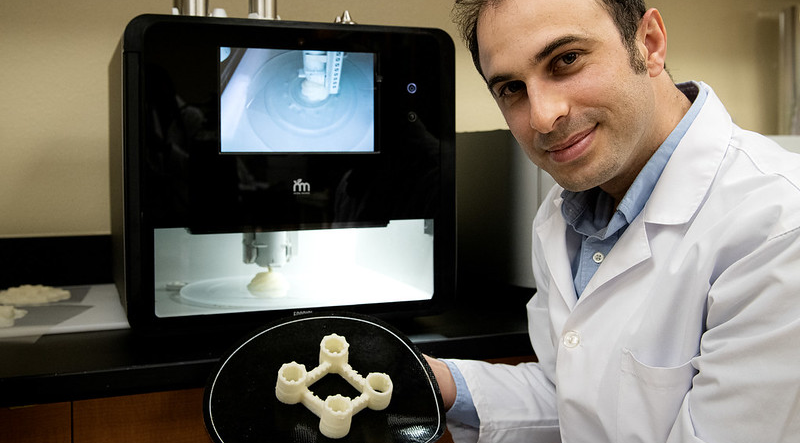
Nanotechnology research used to boost dietary value of 3D printed foods
Mike Edwards
News 3D printed foods agriculture Ali Ubeyitogullari nanotechnology nutrition University of Arkansas Ali Ubeyitogullari uses 3-D printing to infuse printed foods with phytochemical nutrient additives. He is also investigating 3-D printing to produce improved probiotic products. (U of A System Division of Agriculture photo by Fred Miller)
Ali Ubeyitogullari uses 3-D printing to infuse printed foods with phytochemical nutrient additives. He is also investigating 3-D printing to produce improved probiotic products. (U of A System Division of Agriculture photo by Fred Miller) The University of Arkansas System Division of Agriculture is using an advanced nanotechnology to increase the nutritional value of 3D printed foods.
According to the university, Ali Ubeyitogullari, an assistant professor of food engineering, employs supercritical carbon dioxide to reduce bioactive compounds — naturally occurring chemicals found in foods — to nanoscale particles that are more easily absorbed by tissues in human digestive systems. Bioactive compounds have health benefits beyond their normal nutritional value and are common ingredients in nutritional supplements.
Ubeyitogullari said 3D printing offers several advantages over traditional manufacturing methods. “It allows us to precisely control the amount of bioactive compounds used in a product,” he said.
“And it offers precise control of where they will be located within a food matrix.”
Print this page